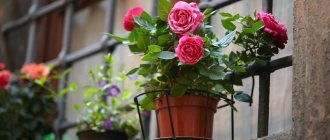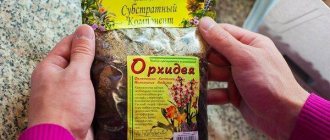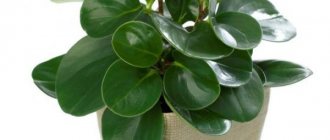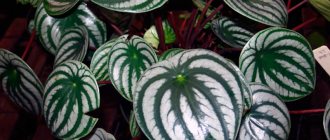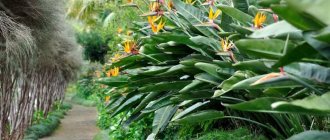Petunias - These are popular balcony plants that, even with a little care, will delight you with their lush flowering. An interesting fact is that it is a perennial plant, but in our conditions it is grown as an annual.
The first species was discovered in 1823 in Brazil. Gradual breeding has produced an incredible number of varieties, on average more than two hundred. Hybrid varieties, which are characterized by a greater variety of colors, are mainly popular.
Abundance of forms and varieties
Petunia began to be specially grown back in the 18th century. Many new varieties and hybrids have been developed. Some varieties are suitable for flower beds and borders, others decorate balconies and terraces, alpine slides, and spread like a flower carpet on the ground. Depending on the size of the flowers and appearance, all varieties of petunias are usually divided into several groups:
- multifloral petunia
- grandiflora petunia
- floribunda
- ampelous.
Multifloral petunia
These varieties have a huge number of small flowers with a diameter of 7 cm. The buds grow very densely and almost completely cover the bush. It begins to bloom early and blooms until the first cold weather. This is a fairly unpretentious plant, rain and sun. Blooms profusely. The colors are both variegated and monochromatic. These petunias are compact and quite low; they are used to decorate flower beds and borders in the form of a carpet flower bed. They are also often cut, turning them into a flower ball. Varieties of multi-flowered petunias that are often grown are the following:
Snowball . Variety with white flowers. Height 30 cm, bud diameter 5 cm. Blooms in June and continues to bloom until the first frost. A variety of flowers that is resistant to many vagaries of weather.
Alderman . Height 30 cm. Diameter of blooming flowers 5 cm. Dark blue flowers. It blooms from June until frost.
Debonair F1 Black Cherry . Hybrid American variety of petunia. Grows 30 cm tall and wide. Flowers with a diameter of 6–7 cm are burgundy with black tints. Plants bloom continuously.
Duo Summer . Terry multi-flowered petunia with spreading bushes 20 - 30 cm. Small leaves, 7 cm buds. Pink flowers. Blooms from June to the end of September.
Large-flowered petunia (grandiflora)
The most common group. Unlike the first petunia, the large-flowered variety has larger flowers, but there are fewer of them. It does not tolerate bad weather well, so they prefer to grow it on terraces or balconies. The following varieties are popular:
Corduroy Parade . Hybrid 25 cm in height. The flowers are burgundy-red.
Sonata . Snowy white flowers 12 cm in diameter, simple flower shape.
Pink sky . The flowers are bright pink. Large buds.
Picoti . Height 30 cm. Flowers 7 cm. Color can be red, crimson or blue with a white border.
Ampelous petunias
They are distinguished by long, falling shoots, densely covered with buds. Ampelous petunia has its own peculiarities.
- The length of the growing shoots is from 30 to 120 cm. They fall down, so it is preferable to grow them in hanging pots.
- The size of petunia leaves depends on age; the older, the larger.
- Flowers are formed along the length of the shoot. They have a bell shape.
- One plant can produce buds of different colors and sizes.
- Rich color palette. The petals are most often two-colored. The inside is brighter.[BR]They like to decorate balconies, terraces, and pillars with hanging plants. Blooms from June until frost.
There are many varieties of ampelous petunia. The popular ones are:
Black velvet has an unusual color. 25 – 30 cm, large flowers 8 cm in diameter, black velvety color.
Mashenka is a densely branched variety, the length of the released shoots is 80 cm, the flowers are funnel-shaped, 6 – 7 cm in diameter. Color pink, yellow center.
The Snow Queen is a hybrid, its shoots reach 80 cm. The flowers are snow-white with a pleasant smell.
Explorer is widely used. Wide variety of colors. Stems 1.5 meters. The flowers are large, with a waxy structure, which allows them to withstand bad weather.
Floribunda
Petunia floribunda falls between multi-flowered and large-flowered petunias. Tolerates bad weather well. Flowers 10 cm. Floribunda looks best in mass plantings. Grows well in both sun and shaded areas. Popular varieties:
Sonia is a series that includes 11 varieties. The plant is 25 cm, the bush is very compact. Flowers with a diameter of 8 cm, the color can be different: purple, white, red, pink. Can be two-color.
Milky Way - petunia with shoots 25 cm. Snow-white flowers with a pink star inside, reaching 10 cm. They begin to bloom in May and until the end of autumn frosts. They withstand the vagaries of the weather well and do not lose their shape after rain.
Angora is a hybrid variety with erect shoots up to 45 cm in height. Blooms from early June until frost. The flowers are 7 cm in size, with wavy edges, double. Pink color.
Celebrity - a series of hybrids includes 13, both single-color and multi-colored colors. Plants resistant to rain and cold, no higher than 30 cm. There are many small buds on the shoot. It is better to plant in groups.
Description
Petunia is a herbaceous or subshrub plant from the Solanaceae family. Depending on the species, it grows from 10 cm to 1 m, and the size of the flowers varies from 3 to 16 cm.
Petunia in a container
The plant was first characterized by Lamarck in 1793. He found it in a herbarium from Uruguay.
In 1843, R. Vilmorin united all varieties bred at that time under the general name hybrid petunia (P. x hybrida). This is how varieties of this plant are still called.
Petunia, planting and caring for it is not considered labor-intensive. However, there are varieties that are less resistant to unfavorable conditions. Therefore, when purchasing a flower, it is advisable to familiarize yourself with its care rules.
For reference! The name "petunia" comes from the word Petun, which means "tobacco" in Brazilian.
Growing petunia seedlings
To get strong and high-quality seedlings, you need to be careful when choosing containers and soil. The seedling boxes should be made of wood, plastic or ceramic. Containers should be wide and of medium depth. Drainage holes are required. You can use plastic disposable food containers.
It is necessary to put drainage at the bottom of the container. You can use expanded clay, pebbles. You can buy special drainage at a flower shop. This is necessary so that air passes to the roots and water does not stagnate in the soil.
Then the seedling containers should be disinfected. You can use Formalin or a solution of potassium permanganate. After processing, the container should be thoroughly rinsed with water. If seedlings are planted in a wooden box, a layer of paper, preferably thick paper, should be placed on the bottom.
Container for planting
To grow petunias for seedlings, it is enough to use a small container up to 10 cm deep. There are ready-made cassette greenhouses on sale, but a plastic container for various products is also suitable. Before filling the soil, it is worth disinfecting the container with a weak solution of potassium permanganate and rinsing.
It is worth making holes in the bottom of the container for drainage. It is necessary to lay a layer of expanded clay on the bottom. The soil that will be used for growing seedlings must undergo heat treatment. For this purpose, place it in the microwave for a few minutes, or pour boiling water over it.
Do not fill the container completely with soil. It is necessary that the soil does not reach the edge of the container by 2 cm.
Seed selection
Petunia seeds are sold in two types:
- in granules;
- in bulk.
Seeds in granules are more convenient and have good germination. It is worth deciding on the timing of sowing them for seedlings.
It should be remembered that two months pass between sowing and the first flowers. They begin to plant seedlings from the second half of February until mid-March. This depends on whether it is possible to provide the seedlings with additional lighting, since there is still insufficient daylight in February.
For petunia seedlings, neutral or slightly acidic soil is needed. It should be a nutritious mixture, loose, that retains moisture, but does not get wet. You can purchase the mixture in the store. Universal ready-made substrate Stender. For 5 liters of Stender you should also add half a liter of ash, a large spoonful of potassium sulfate, 250 grams of perlite and mix well.
Another option for the mixture: part garden soil, part sand and two parts peat. Stir, sift through two sieves of different sizes and pour over a strong solution of manganese. Or use the Previcura solution.
Drainage is poured into the bottom of the container, then a 6 cm layer of earthen mixture is added. There should still be at least 3 cm left to the end of the sides. Petunia seeds are very small and difficult to sow. Granulated seeds are more convenient. They can be taken with tweezers and placed on the ground in rows.
The seeds are not deepened; they are simply sprinkled with a two-millimeter thin layer of soil. If you use loose small seeds, you can sow them in three ways:
- use of sand;
- use of snow;
- using a toothpick.
The first method is to mix the seeds with sand and spread them over a substrate that has been watered in advance. The crops are slightly moistened on top using a spray bottle and sprinkled with a millimeter of soil. You cannot use a watering can, as such watering will greatly deepen the seeds into the soil.
The second method involves sowing petunia seeds on a thin layer of snow, laid in a 1 mm thick layer on the surface of the substrate. Seeds are poured onto the snow and distributed over the entire surface using tweezers. When the snow melts, it will draw the seed material to the required depth and moisten the crops. And you won’t need to water or sprinkle soil on top.
The third method of sowing is using two toothpicks. The seeds are poured onto a white sheet of paper. Pick up the seed with one toothpick, with the tip moistened with water, and shake it off with another toothpick, moisten it on top and sprinkle it with substrate.
Having finished sowing, cover the containers with transparent material and take them to a warm room where there is enough light. With a temperature of 25 degrees.
Seeds can be planted in special seedling cassettes. You can select by the number of cells. A cassette with cells is useful for repeated use, and the seedlings in them do not need picking. Experts advise choosing fairly spacious cells with a height of 10 cm.
The cells are filled with substrate. Caring for sprouts in cassettes is the same as caring for seedlings in regular boxes. Some gardeners plant seeds in special peat tablets. It is easiest to plant pelleted seeds in them. You need peat tablets 4.5 cm in diameter. They are placed in water to soak. Next, excess liquid is removed, and the tablets are placed in a container with high edges.
You can use cassettes. Place one seed in each tablet and water it with a pipette to soften the seed shell. When the shell gets wet, you should smear it with your fingers so that the seed germinates faster. The plantings are covered with transparent material.
It is believed that such seedlings are easier to care for; they do not need to be replanted and it is easy to understand when they need watering. In addition, with this method, the germination rate of petunia seeds is much higher.
Diving seedlings
When the first 2 true leaves grow, pick the seedlings. Take cups made of transparent material and make holes at the bottom. Pour sterilized soil into the cups. Try digging up the sprouts with lumps of soil and transplant the petunia seedlings into the soil.
For almost a month after diving, the seedlings in the cups grow slowly, as their root mass is rapidly increasing. When the ground is strongly entwined with roots, transplant the grown seedlings, one at a time, into a 2-liter container. Each container should also have holes in the bottom.
Seedling care
If everything is done correctly, the first shoots will be visible in a week. Care for flower seedlings is very important:
- watering;
- feeding;
- lighting;
- temperature regime;
- dive;
- topping;
- control of diseases and pests.
Watering
Petunia seedlings need moderate humidity. The soil should not be wet. This can lead to rot and disease. But overdried soil is also detrimental to seedlings.
Young plants need drip watering. For watering, use a syringe or pipette, pour at the root, do not get on the leaves. You can pour water over the wall, or use a tray for watering. Water for irrigation needs to be settled, at room temperature, or slightly warm.
Two minutes before watering, add lemon juice to the water. Water the flowers, depending on the weather. If the day is sunny, water in the evening. If the weather is cloudy, then watering is carried out in the morning.
Top dressing
Feeding young plants is also very important. It is recommended to apply fertilizers systematically. In the first two weeks, you will need to spray the petunias with a weak solution of potassium permanganate or Pervikura. After the appearance of the fourth leaf, the plants are fertilized with a solution of yellow “Kristalon” in the amount of half a tablespoon per 5 liters of water.
Fertilizing can be done either by foliage or by adding fertilizer to the soil. For foliar feeding, use “Kristalon” and “Uniflora micro”. Seedlings are fed three times a week, using two methods alternately. After picking, it is recommended to use fertilizers that stimulate root growth. Such as “Aquarin”, “Solution”, “Plantofol”. Everything is prepared according to the instructions.
Temperature
Petunia seeds germinate at 25 degrees. If the temperature is low, the seeds simply will not sprout, and if it is higher, the plants can become very stretched and begin to hurt. After the shoots appear, you will need to open the plants twice a day, starting at 20 minutes.
The covering is completely removed when the plants grow to it. The temperature is reduced to 20 degrees during the day and to 16 at night.
Lighting
Flowers need lighting almost around the clock. Good lighting allows young plants to grow well and speeds up the flowering period. The duration of the required daylight hours is 12 hours. The lighting is turned on in the morning at 7 o'clock and turned off in the evening at 22 o'clock.
Additional lighting is installed at a height of 20 cm from the seedlings. For this purpose, LED, fluorescent, and phytolamps are used.
Picking
Picking seedlings is carried out only if they grew in common boxes. For picking, select 250 ml cups with holes for drainage. When the shoots are 5 cm in height, begin picking.
- Using a sharp garden knife, plant the plants to a depth of 3 cm. The knife is inserted at an angle of 45 degrees. It turns out that by pinching off a piece of the root, the development of the root system is stimulated.
- The flower is placed in a separate container.
- Add substrate to fill the voids. Watered.
- The temperature is reduced by three degrees for a week, and sunlight is avoided.
- You can feed only after a week and a half.
If the seedlings are grown in tablets, then the seedlings can be planted in an individual container along with it.
Pinching
Pinching is done for all varieties of petunias, except for hanging varieties. It consists of removing a piece of the stem at the 4th and 5th leaf along with the growing point.
Young shoots will emerge from each leaf axil, and in the future such plants will bloom profusely. After half a month, a second pinching is carried out. To get a lush bush, pinching must be done several times.
Improper watering and excess moisture can lead to blackleg disease. A dark spot forms at the base of the shoot, the tissue underneath becomes soft and rots. A constriction forms and the plant falls.
All diseased seedlings must be destroyed, and the soil must be watered with a solution of potassium permanganate or Formalin.
Often, due to excess moisture, petunia seedlings may experience iron deficiency. In this case, iron chelate, which is contained in the Ferovit product, should be added to the soil. Conversely, excessive dryness leads to the appearance of spider mites, which settle on the leaves. For the fight, special drugs are used: Neoron and Fitoverm.
Propagation by cuttings
When propagated by seeds, beautiful hybrids may lose their qualities. For example, a double variety plant will have simple flowers. Also, the color of petunia's petals may change. Therefore, cuttings are used. Terry and hanging petunias are propagated using this method.
For reference! Some varieties of petunias do not produce seeds and, in any case, only cuttings are suitable for them.
For queen cells, young, healthy plants with the flowers you like are selected. If lighting is provided in the apartment and the petunia grows well, then cuttings can be taken throughout the year.
The soil used is the same as for seed propagation. Disinfected coarse sand or vermiculite is poured on top of it in a layer of 2-2.5 cm.
How to plant petunia from cuttings:
- cut off the tops with 4-6 leaves from the mother plant;
- remove the lower leaves, leaving the top 2;
- shorten the remaining leaf blades by half;
- place the cuttings in the ground to ¼ of their length;
- maintain a distance between seedlings - it should be about 2.5 cm;
- cover the container with glass or transparent film;
- put it in the light, not in the scorching sun, and maintain the temperature at 20-25 °C.
Important! Root cuttings immediately after cutting. Otherwise, after an hour, the root formation process may be disrupted.
After planting, the seedlings that begin to take root are sprayed twice a day and ventilated. If there is mold, remove it, increase ventilation and reduce watering. You can spill it with a weak solution of potassium permanganate.
When the roots grow 1.5 cm, the plants can be transplanted into separate pots.
Petunia transplant
When, after the picking, the seedlings take root and begin to grow, they begin to prepare them for planting. The plant is hardened for two weeks and accustomed to fresh air. Start with 15 minutes outdoors. And just before planting, flowers should be exposed to the air around the clock.
Flower planting begins from the second half of May until mid-June. Petunia is a fairly unpretentious plant, but still prefers sunny areas. Prefers loamy, fertile soil. The soil is dug up, humus or compost is added, and weeds are removed.
Flower seedlings are planted when there is no sun, or in the evening.
The holes should be ten cm deep. The distance depends on the selected variety. Between large-flowered ones - 23 - 25 cm, between small-flowered ones - 18 - 20 cm. Ampelous ones are planted 28 - 30 cm from each other. Before planting, seedlings are watered for better removal from containers.
To avoid damaging the roots, plant them together with a lump of earth. After planting, the flowers are watered, and the soil nearby is mulched with humus or peat. Petunia should be protected from strong sunlight for several days. This can be done using canopies made from cardboard boxes.
Sowing dates according to the Lunar calendar
Agricultural technicians have been paying attention to the phases of the moon for thousands of years. As soon as the moon begins to grow, and before the full moon, the plant begins to fill with juices that move from the roots to the very petals. Therefore, plants that bear fruit above the surface of the earth must be planted during the waxing moon. Petunia is one of these plants.
So the following days will be beneficial for planting seeds:
- in January: 4-7, 9, 10, 27, 28 and 29
- in February: 1, 2, 6, 7, 26, 27, and 28
- in March: 1, 2, 4-8, 26, 28, 31
- in April: 1-4, 24, 35, 27-30
- in May: 1, 2, 25-29
You should not plant:
- in January: 11, 24, 25 and 26
- in February: 3, 8, 9, 17, 21 and 23
- in March: 9, 19, 20, 21, 24
- in April: 8, 15, 16, 17, 23
- in May: 7, 13, 14, 22 and 23
It is worth considering what zodiac sign the Moon is in. The moon will be favorable if it is in:
- Capricorn;
- corpuscle;
- twins;
- virgin;
- scales.
Seedlings from seeds planted these days will be viable, the flowers will be bright, and the root system will be strong.
Flower care
Care consists of:
- in timely watering;
- in systematic feeding;
- in the picking of withered flowers.
Petunia should be watered only in dry weather, preferably in the evening. The plant does not like excessive humidity and when water stagnates in the hole. It is enough to simply moisten the soil around the roots a little. The next day, the ground is loosened so that a crust does not form, and the weeds are removed.
The beauty and duration of the flowering period of petunia depends on regular feeding. After 10 days, the plant is fertilized for the first time. Use nitrogen-containing fertilizers. Nitroammophoska has proven itself well.
During the formation of buds, potassium salt and superphosphate are used. You can use wood ash from a fire. If the leaves begin to turn yellow and fall off, the plant may have developed chlorosis. This means he lacks iron. In this case, Ferovit will help. They spray petunia 3-5 times with a period of three days.
Flowers that have bloomed are removed. This pushes the plant to form new buds and prolongs flowering. Using the pinching procedure, the bush is given a beautiful shape.
You can make a bush in the form of an unusual flower ball with many blossoming buds.
FAQ
Which petunia seeds are best to buy? When choosing petunia seeds, be sure to pay attention to the timing indicated on the package.
Some plants germinate well even from expired seeds, but this does not apply to petunias: sometimes even fresh seeds of this plant do not germinate. Buy planting material from producers with a good reputation. If you do not have experience in purchasing seeds, seek advice from those who have been growing petunias for several years.
The seeds of this flower crop are very small, and it is not recommended to sow them densely.
To make it easier for flower growers to sow, some companies produce pelleted seeds, that is, covered with a shell that contains substances necessary for the development of the sprout. However, the problem is that this coating does not dissolve well, and you may wait in vain for the expensive seeds to sprout. In order for the pelleted seeds to germinate, it is better to crush the shells before sowing. What to do to prevent petunia seedlings from stretching?
Most likely, your seedlings are not getting enough light or are planted too densely. In the first case, if the seedlings have just begun to stretch, you need to provide them with additional artificial lighting as soon as possible, which should work for at least 14 hours a day.
Densely sprouted seedlings should be pruned by pinching the main stem during transplantation. If you discover the problem at an early stage, you can simply add soil to the container and fertilize it.
You are unlikely to be able to correct the situation when the seedlings have already become very elongated.
But try to create conditions for the seedlings so that they do not have to fight each other for light, air and food, and then petunia will develop evenly and correctly. How to grow petunia on toilet paper?
Cut off one side of a colorless plastic bottle without separating the bottom and neck, place the container on the remaining side, place several layers of toilet paper in it and moisten it with a spray bottle with warm water so that it gets wet but does not spread. Using a damp toothpick, pick up the seeds prepared for sowing and place them on the paper at the required distance from each other. Press the seeds firmly onto the paper, place a transparent plastic bag over the bottle and tie it tightly.
As soon as the shoots appear, the bag should be removed and the bottle should be moved under an artificial light source, which should work around the clock for the first three days.
In the future, seedlings will need only 14 hours of light per day for normal development. When the seedlings form two true leaves, transplant them into the ground, pinching off the central root. It is better to keep the picked seedlings under film for the first time so that they take root faster. Is it necessary to pick petunia?
Picking petunia seedlings is carried out in order to provide the growing seedlings with the necessary nutrition area and good lighting, since when sowing in a common container, the small seeds of this flower crop are difficult to distribute at a sufficient distance from each other. Pinching the central root when picking strengthens the seedlings and provides higher resistance to diseases and other adverse factors.
Picking can be avoided if you grow petunia seedlings in peat tablets.
When the seedlings grow up, you can place the tablets with seedlings in separate cups, adding a little soil to them. If you grow seedlings in small volumes, then using peat tablets is advisable. But when growing a large number of seedlings, when you have to use large containers, the developing seedlings will have to be picked. Petunia seedlings began to turn pale - what to do?
Pale leaves are a sign of impaired chlorophyll production by plants. This happens for several reasons, but primarily due to a lack of one or another element in the soil, and most often iron. In this case, you need to treat the seedlings with an iron-containing preparation in chelated form, for example, Ferovit.
Petunia leaves can also lose their brightness because they are exposed to light around the clock. For seedlings of this crop, a 14-hour daylight period is sufficient; the rest of the time, the seedlings must rest.
Crowding also negatively affects the condition of the seedlings: pale leaves can be caused by insufficient development of the root system. Divide the seedlings into separate containers, and after a while you will see how they get stronger and restore the color of the leaves.
Do not forget to regularly feed and water the seedlings.
Regular pinching of shoots also has a beneficial effect on the health and appearance of seedlings. Is it possible to sow petunia directly into a flower garden?
You can try to grow petunia by sowing it in open ground, but the tiny seedlings will be very difficult to protect from rain, wind, hail and temperature changes.
Weak plants will suffer either from drought or from waterlogging. There may also be a problem with pinching shoots. In addition, tiny petunia seeds are difficult to sow with proper spacing, and you will have to thin out the seedlings. Most of the uprooted seedlings will die, and this is an overspending. Therefore, it is more advisable to grow petunia seedlings at home, and then transplant the seedlings into a flower garden or balcony container. How to slow down the too rapid growth of petunia seedlings?
If you are afraid that the seedlings will have time to grow before the soil in the flower garden warms up, move the seedlings to a cool room - a greenhouse or a glassed-in loggia, where the daytime temperature does not exceed 15 ⁰C.
If you do not have this opportunity, treat the seedlings with one of the growth regulators that can be purchased in the store. These drugs will slow down the too rapid development of internodes and will not allow the seedlings to stretch out. In addition, regulators strengthen the root system, increase the decorative value of flower crops and prolong the flowering period.
If you sow petunia in a common container, the seedlings may stretch out due to the fact that they have to fight with each other for light.
Plant the elongated seedlings in separate cups, pinching the central root: the plants will receive the necessary nutritional area and equal access to light. Petunia seeds do not germinate for three weeks - why?
High-quality petunia seeds germinate within a week.
If after 10 days of waiting the seedlings have not appeared, it means that you got low-quality seeds or you planted them too deep when sowing. Dried seeds may not sprout because the dense shell does not allow them to break through. Even if you wait 2-3 weeks for germination, the seedlings will grow weak, sickly and their flowering will be poor. Therefore, do not waste your time waiting for seedlings, it is better to reseed the petunia. The emerging seedlings grow very slowly - why?
This is normal for petunia seedlings: the shoots that emerge from the ground seem to freeze. The fact is that at this time all the efforts of the seedlings are aimed at developing the root system. Therefore, do not panic: take care of the seedlings as usual, and in two weeks the ground organs of the seedlings will begin to develop. There is no need to feed the seedlings at this time.
Growth of older seedlings may be slowed if the room is too cold. The normal temperature for the development of petunia is 20 ⁰C. At 15 ⁰C and lower temperatures, seedling growth stops and they may die. It is also necessary to monitor the difference between day and night temperatures: it should not exceed 10 ⁰C.
Often the growth of seedlings slows down after picking.
In order for the seedlings to recover after this procedure and begin to grow, feed them with fertilizers that strengthen the root system. How to grow petunia seedlings without picking?
Picking hardens and strengthens petunia seedlings, but if you do not have experience in carrying out this procedure and you are afraid of damaging the seedlings, sow not in a common container, but in separate cups with drain holes in the bottom. Then you won’t have to pick the seedlings. To create a greenhouse effect that accelerates the emergence of seedlings, cover the cups with film.
You can grow petunia in peat tablets.
In this case, picking seedlings is also not required. When the seedlings grow, place each tablet in a glass and add a little soil to it. Why pinch petunias and how often should you do it?
Pinching is the removal of the growing point at the top of the seedling, stimulating the development of side shoots and the formation of a compact, abundantly flowering bush. The stems that have undergone the procedure become denser and stronger, and large leaves of a rich green color grow on them.
However, pinching overgrown seedlings will not give such an effect, so there is no need to delay the procedure. The stems are pinched for the first time when 6-7 leaves have formed on the seedling: the top is pinched, leaving no more than 4-5 leaves on the stem. The next pinching is carried out when the stem reaches a length of 12-15 cm, and then the decorative appearance of the plant is maintained by pinching off excessively long shoots. Do not forget to feed the petunia after each procedure with complex mineral fertilizer. It is best to combine fertilizing with watering: add a little fertilizer to the irrigation water once a week.
A poorly rooted or weak plant should not be pinched.
Why do my petunia have purple leaves?
Most often, this happens if the room is not warm enough: in cold soil, the roots stop absorbing nutrients, and the plants suffer from a lack of phosphorus or nitrogen.
Sometimes plants produce the pigment anthocyanin in response to stress. Analyze whether you are properly caring for the seedlings and whether the conditions are suitable for them. Remember that petunia seedlings need light for 14 hours a day and rest in the dark the rest of the time.
Collecting seeds
If you need petunia seeds for seedlings next year, you should select several lower buds on the bushes of the selected varieties. The process of seed formation in these buds is faster. After 60 days from the formation of buds, the seeds will ripen.
The capsules are cut off, the seeds are poured out and stored at room temperature. Each box contains about one hundred seeds. They are very small, about half a millimeter. Then the seeds ripen at home for four months. They do not lose their viability for about four years.
It is best to distribute the seeds into bags and label which variety so as not to confuse them.



